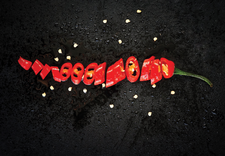Backing up a living system
Serve It up Hot

© Photo by Aliona Gumeniuk on Unsplash
The tools and strategies you use to back up files that are not being accessed won't work when you copy data that is currently in use by a busy application. This article explains the danger of employing common Linux utilities to back up living data and examines some alternatives.
Tools to make backups of your files are plentiful, and the Internet is full of tutorials explaining how to use them. Unfortunately, most entry-level blogs and articles assume the user just wants to back up a small set of data that remains static throughout the backup process.
Such an assumption is an acceptable approximation in most cases. After all, a user who is copying a folder full of horse pictures to backup storage is unlikely to open an image editor and start modifying the files at random while they are being transferred. On the other hand, real-life scenarios often require backups to occur while the data is being modified. For instance, consider the case of a web application that is under heavy load and must continue operating during the backup.
Pitfalls of Common Tools
Traditional Unix utilities such as dd, cpio, tar, or dump are poor candidates for taking snapshots from a folder full of living data. Among these, some are worse than the others.
[...]
Buy this article as PDF
(incl. VAT)
Buy Linux Magazine
Subscribe to our Linux Newsletters
Find Linux and Open Source Jobs
Subscribe to our ADMIN Newsletters
Support Our Work
Linux Magazine content is made possible with support from readers like you. Please consider contributing when you’ve found an article to be beneficial.

News
-
Mozilla Plans to AI-ify Firefox
With a new CEO in control, Mozilla is doubling down on a strategy of trust, all the while leaning into AI.
-
Gnome Says No to AI-Generated Extensions
If you're a developer wanting to create a new Gnome extension, you'd best set aside that AI code generator, because the extension team will have none of that.
-
Parrot OS Switches to KDE Plasma Desktop
Yet another distro is making the move to the KDE Plasma desktop.
-
TUXEDO Announces Gemini 17
TUXEDO Computers has released the fourth generation of its Gemini laptop with plenty of updates.
-
Two New Distros Adopt Enlightenment
MX Moksha and AV Linux 25 join ranks with Bodhi Linux and embrace the Enlightenment desktop.
-
Solus Linux 4.8 Removes Python 2
Solus Linux 4.8 has been released with the latest Linux kernel, updated desktops, and a key removal.
-
Zorin OS 18 Hits over a Million Downloads
If you doubt Linux isn't gaining popularity, you only have to look at Zorin OS's download numbers.
-
TUXEDO Computers Scraps Snapdragon X1E-Based Laptop
Due to issues with a Snapdragon CPU, TUXEDO Computers has cancelled its plans to release a laptop based on this elite hardware.
-
Debian Unleashes Debian Libre Live
Debian Libre Live keeps your machine free of proprietary software.
-
Valve Announces Pending Release of Steam Machine
Shout it to the heavens: Steam Machine, powered by Linux, is set to arrive in 2026.

